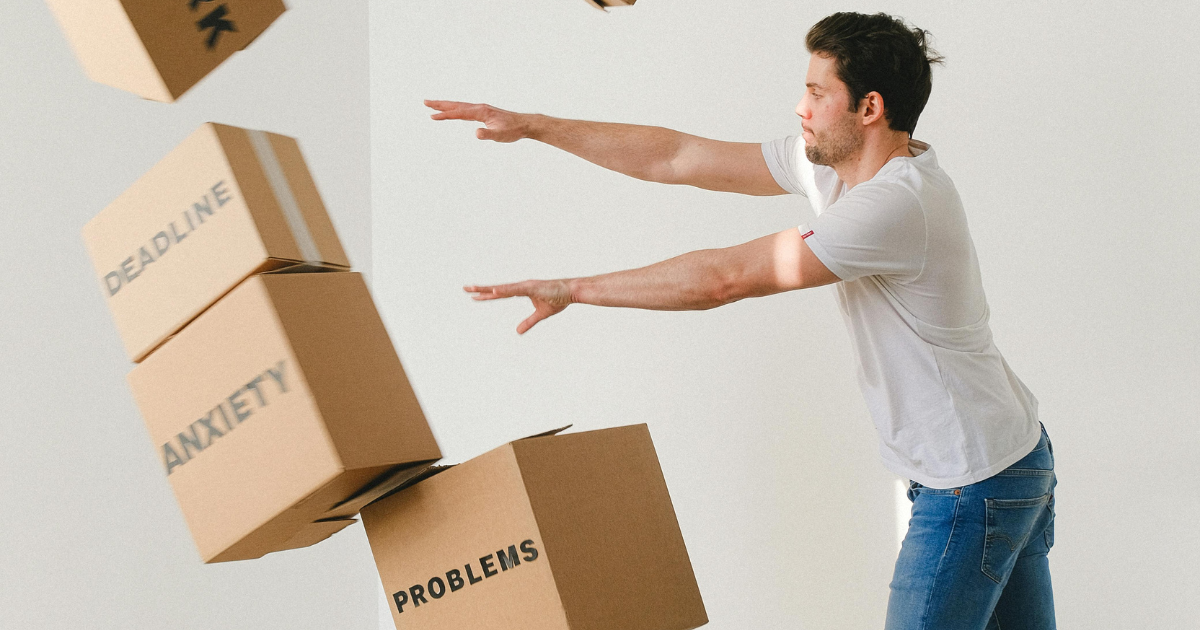If an anxiety attack is something that you want to mitigate in yourself, there are certain techniques that you can employ to help yourself back into a livable, more comfortable zone for your mind and body. In this article, we will discuss some of the techniques you can try on yourself to calm down from an anxiety attack.
Recognizing the Signs of an Anxiety Attack
First and foremost, you need to understand that there are different types of anxiety and panic attacks. Knowing these types is just one step to help you deal with anxiety. The following bullet points will list different types of panic and anxiety disorders and some of their symptoms.
- Generalized Anxiety Disorder (GAD) – this is a general, everyday type of anxiety, and most likely the least pronounced in people. This is just an unrealistic type of worry about simple, everyday duties. Someone who worries about standing in a line that is too long at the grocery store would be one example.
- Panic Disorder – this is a more robust fear that comes on suddenly to its victim. Symptoms include chest pains, the onset of rapid, pounding heartbeats, and excessive sweating. These types are easy to identify, even in strangers.
- Phobias – these types of anxiety stem from an unnatural fear of something that gives rise to anxiety when they are seen or experienced. An experience would be certain sounds known as phonophobia, while the scene could be something like a scorpion or spider known as arachnophobia.
- Social Anxiety Disorder (SAD) – people with this form of anxiety are more common, as they fear small groups as well as large groups of people getting together. An overwhelming sense of anxiety occurs when going to large parties or gatherings, such as concerts, and a sense of foreboding and self-consciousness takes place.
- Post-Traumatic Stress Disorder (PTSD) – This form of anxiety and panic disorder comes from having experienced traumatic stress. Wartime personnel would fall into this category easily. These experiences are often shocking and scary incidents, such as someone who has experienced extreme physical abuse, witnessed a murder or a suicide, and typically start the person’s fight or flight response.
What Triggers Anxiety Attacks and How to Catch Them Early
Common Stressors and Underlying Conditions
Some of the more common stressors and underlying conditions for people with anxiety can have different effects in different ways for them. Knowing these underlying issues may help you help someone with an anxiety disorder. Here are some of the more common ones listed in bullet points:

- Stressful life events. Death in the family of a close loved one, spouse, sibling, or child
- Health issues. Issues such as Crohn’s disease, fecal incontinence, stomach ulcers, and migraines
- Substance Abuse. Repeated abuse can cause the body and the mind to break down, causing a myriad of anxiety and even panic
- Past Trauma. Physical and emotional abuse
- Perfectionism. Obsessive Compulsive Disorder (OCD)
These are a few of the common stressors and underlying conditions. A lot of anxiety in yourself can be mitigated through knowledge of these triggers. You can get help from loved ones, close friends, counselors, and therapists.
Knowing what triggers your anxiety is the key to mitigation, and techniques such as managing your stress levels, avoiding and reducing exposure to yourself, and keeping your mind and body healthy are a few things you can employ to help yourself identify and catch the anxieties before they start.
Physical Vs. Emotional Triggers
Emotional triggers come from stimuli that evoke a strong sense of feeling or emotions that come from the past experiences of that person. Traumatic experiences can cause a lot of triggers in someone who gets reminded of a certain event, time, or place in that person’s life. While emotional triggers seem to be intense when talked about, physical triggers can be just as hard to deal with because they are still triggering anxiety. Lights, loud noises, smells, all can cause anxiety, panic, and even painful migraines.
Grounding Techniques That Help Calm You Down
5-4-3-2-1 Method and Sensory Reset
To cure panic attacks quickly, the 5-4-3-2-1 method is a grounding technique employed when you feel an anxiety attack coming on. It may take some getting used to for each person, as it will be different almost every time based on your location at the time of the attack. It is broken down as follows:
- 5 things you can see
- 4 things you can touch
- 3 things you can hear
- 2 things you can smell
- 1 thing you can taste
Movement, Distraction, and Visualization
Here is a table that will list some useful anxiety relief and mitigation techniques that can be employed almost effortlessly:
Movement | Walking or light jogging can make your mind release endorphins that can help ease anxiety and help you focus on yourself in a positive manner. |
Distraction | Music that lights up your soul, or working on a complicated jigsaw puzzle, can take your mind off the anxiety and shift your focus and energy elsewhere. |
Visualization | Using guided imagery to picture yourself in a happy place, such as snorkeling in crystal clear blue oceanic waters. Picturing yourself in serene environments is one way to avoid panic attacks. |
Breathing Exercises to Reduce Anxiety Immediately
Deep breathing is a technique highly recommended by many health professionals to help calm you down effectively, immediately. Taking large, deep breaths while slowly exhaling and repeating the same over and over again can help you get the oxygen you need to think clearly, taking your mind off the anxiety effectively while making you feel better.
Other breathing methods include box breathing, belly breathing, pursed-lip breathing, alternating nostril breathing, 4-7-8 breathing, and the 5-5-5 method, which involves breathing deeply for 5 seconds, holding your breath for 5 seconds, and finally breathing out for 5 seconds.

Supporting Someone Having an Anxiety Attack
When it comes to helping someone suffering from anxiety, there are some key things you should remember to do. Some of these things may seem trivial to you, but they do help to calm someone down from a panic attack.
The goal here is to help decrease anxiety in others and ultimately help people with their anxiety. You want to be able to do this the right way, but first, I will bullet list some common things that you should be doing for someone who is suffering an attack.
- Stay calm – show the person you have it together so they can trust you
- Focus on breathing – slow, deep breaths in and exhale
- Validate their distress with them
- Respect the person’s needs and wants
- Be courteous and ask how you can help them
- Stay with them until the attack passes or dissipates enough
- Let them know that they can accept their anxiety and that it’s okay to be anxious
When Anxiety Becomes a Pattern: What to Do Next
Knowing when and why anxiety attacks occur is the first step to doing something about them. There are several options you have, such as developing a routine to mitigate anxiety attacks. You can seek professional help from counselors, therapists, or even use prescription medications if they are prescribed by a doctor for anxiety symptoms.
You can have a go-to spot for employing techniques to mitigate the attacks and use a friend or a loved one to lean on during those times as well. Taking proactive steps to manage your anxiety, understanding it, and even preventing it from becoming debilitating are the things that will keep you healthy, happy, and able to live a longer life.
Looking for Ongoing Support? Lonestar Mental Health Can Help
At Lonestar Mental Health, we can help you understand and manage your anxiety. We are a patient-centered practice tailored for your comfort and peace of mind. We offer expert, personalized care tailored to your needs in a peaceful environment with comprehensive care in mind, made up of a team of experts. You can contact us anytime, and we will respond to you promptly as our team is online 24/7.
FAQs
What are the signs of an anxiety attack?
There are many signs of anxiety in someone. Sweaty palms, sweating profusely just standing still, pacing back and forth with nervous energy, headaches and migraines, acting nervous and not making eye contact, or looking around wildly.
How long do anxiety attacks last?
Anywhere from just a few minutes up to 30 minutes.
What is the fastest way to calm an anxiety attack?
Employing methods to redirect your focus away from anxiety, with deep breathing techniques and grounding strategies, has proven to relieve anxiety quickly.
Can breathing exercises stop anxiety?
Yes, breathing exercises are a grounding technique. It is listed as one of the things to stop an anxiety attack in someone who is experiencing one.
Should I see a doctor for frequent anxiety attacks?
Yes, seeing a doctor can help you understand why and what triggers your anxiety. This will help you take steps to proactively manage your anxiety and know what to do when anxiety occurs.












